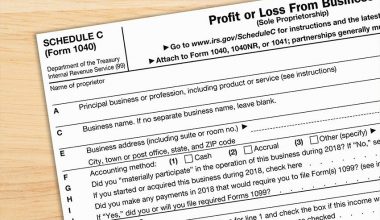A periodic inventory system is a technique for valuing inventory for financial reporting needs that involves physically counting the inventory at predetermined times. Using periodic inventory as an accounting technique, the cost of goods sold (COGS) is calculated by taking an inventory at the start of each period, adding new inventory purchases throughout the period, and subtracting ending inventory. Companies that utilize it, which are often tiny enterprises, find that it is both simpler to deploy and more cost-effective. In this article, we’ll learn about perpetual and periodic inventory systems, period system accounting, and an example of a periodic inventory system.
Periodic inventory system
An accounting stock valuation procedure known as periodic inventory is carried out at predetermined intervals. At the end of the quarter, businesses physically count their products and use the data to balance their general ledger. The remaining funds are then applied at the start of the new period.
Accounting procedures differ from a perpetual review system under a periodic review inventory system. To determine the amount for normal inventory at the end of the year, the corporation physically counts its stock. Organizations use estimates for mid-year milestones like monthly and quarterly reports. When an accounting firm acquires items to be resold, the general ledger account inventory is not updated. Instead, they debit the purchases made on the temporary account. Every year, a temporary account has a balance of zero. At the end of the year, the accountant transfers the sum to another account.
Businesses make any required modifications after making product purchases to a general ledger account. Because the balance in a contra account’s associated account is offset and shows in the financial statements, it is intended to be the opposite of the general ledger. Purchase discounts, purchase returns, and allowance accounts are some examples of contra accounts. These accounts can be combined to produce net purchases.
Companies maintain delivery expenses in a different account from the primary inventory account in a periodic inventory control system. They keep track of delivery expenses associated with freight-in or transportation-in accounts for incoming inventory. The expenses in this account eventually raise the value of their goods. The entries in the journal would appear as follows:
Perpetual and Periodic Inventory System
To keep track of the amount of inventory on hand, there are two different systems: periodic and perpetual. The perpetual system is the more complex of the two, but it requires a lot more record-keeping to maintain. While the perpetual system continuously monitors inventory balances, the periodic system periodically does a physical count of the inventory to calculate the ending inventory balance and the cost of goods sold.
Comparison between Periodic and Perpetual Inventory Systems
The following are some further distinctions between the two systems:
#1. Accounts
As transactions involving inventory take place, the general ledger, or inventory ledger, is continuously updated under the perpetual system. The cost of goods sold account is not entered at all under a periodic inventory system, however, until after a physical count, which is then utilized to calculate the cost of goods sold.
#2. Computer networks
A perpetual inventory system cannot have its records manually maintained because there could be thousands of transactions at the unit level during each accounting period. On the other hand, for very small inventories, a periodic inventory system’s simplicity enables the use of manual record-keeping.
#3. Expenses for items sold
As each sale is made, the cost of goods sold account is continuously updated under the perpetual system. The cost of goods sold is instead computed in one lump sum after the accounting period under the periodic inventory system by adding all purchases to the beginning inventory and deducting the ending inventory. In the latter scenario, this means that getting accurate cost of goods sold figures before the end of the accounting period may be challenging.
#4. Period counting
Since cycle counting relies on reliable inventory counts that can be obtained in real-time as a baseline, cycle counting cannot be employed with a periodic inventory system.
#5. Purchases
Depending on the type of transaction, inventory purchases under the perpetual system are recorded in either the raw materials inventory account or the merchandise account and a unit-count entry is also made into the individual record that is kept for each inventory item. While there are no individual inventory records to which unit-count information could be added in a periodic inventory system, all purchases are logged into a purchase asset account.
#6. Investigations into transactions
Since the information is aggregated at a very high level, it is almost impossible to trace through the accounting records under a periodic inventory system to ascertain why an inventory-related error of any type happened. However, in a perpetual inventory system, when every transaction is detailed down to the individual unit level, such investigations are significantly simpler.
As the aforementioned list demonstrates, the perpetual inventory system outperforms the periodic inventory method. The main situation where a periodic system may be justified is when the inventory is extremely small and you can assess it visually without having a pressing need for more extensive inventory records. Because warehouse employees may unintentionally record inventory transactions improperly in a perpetual system if they are not properly trained in its use, the periodic system can also be effective in certain situations.
Periodic Inventory System Example
Let’s see an example of a periodic inventory system to try to comprehend the procedure.
Because $100 was added to the inventory account after each period, the current period’s beginning inventory account in this example of a periodic inventory system was $1,000. The inventory account will therefore now be $1,100. You will own this. “The price of the goods that are for sale.”
Cost of Items for Sale = 1000 + 100 = $1100
According to our books, we have the final “Cost of Goods Available for Sale”. However, the company is still unsure of how many goods were sold during that time. Your organization will physically inspect the inventory at the end of the period. Let’s assume that there are 1,050 units in the ending inventory. The physical-checked ending inventory is $1,050 because each unit costs $1. We must transfer $50 from the inventory account to “Cost of Goods Sold” to balance the difference between the physical inventory count and the inventory accounts in the books.
Periodic System Accounting
The accounting periodic inventory system involves more than just counting and monitoring inventory levels; it also entails documenting the entire system as a journal entry so that it can be seen in the books of accounts.
Let’s imagine you own a retail shop where you virtually always need to buy merchandise to run your day-to-day operations. Let’s say your business uses the periodic inventory system to determine the “cost of goods sold.” Your company now needs 10 $1-a-piece units of inventory on any given day, which it paid for with cash during the current accounting period. The purchase cost $10 in total. Naturally, some of that stock could turn into “finished goods” and be sold over the period, but your accountant should not be concerned about that. Instead, a “purchase account”—an “asset”—will be generated regularly for each item of purchased inventory. This account houses every inventory acquisition.
Under the Periodic Inventory System
Under the periodic inventory system, a business does not keep track of changes in inventory levels throughout the accounting period. Instead, it regularly physically counts its inventory at predetermined periods like monthly, quarterly, or yearly. The business uses these physical counts to determine the cost of goods sold and the period’s ending inventory.
The periodic inventory system has the following salient features:
#1. Purchases:
The business does not immediately record the cost of each item sold or change the inventory balance after an inventory purchase. To keep track of the overall cost of the items purchased throughout the period, a debit is made to the purchasing account.
#2. Cost of Goods Sold (COGS)
The business physically counts its inventory after the accounting period. After deducting the initial inventory from the total of purchases and accounting for the ending inventory, the cost of goods sold is determined.
Beginning inventory with fewer purchases and ending inventory equals COGS.
#3. Recording
The corporation does not update the inventory account with each purchase or sale under the periodic system. It solely modifies the inventory balance based on the physical count after the month. As a result, the inventory account might not accurately reflect the current inventory balance.
#4. Presentation of the Income Statement
The cost of items sold is shown separately on the income statement under the periodic inventory system. The footnotes to the financial statement may include information on the beginning and ending inventories even though they are not explicitly displayed on the income statement.
A periodic inventory system’s characteristics
The following are characteristics of a periodic inventory system:
#1. Physical tally
In this system, the various levels of the stock, such as initial supplies, projects in progress, and finished commodities, are physically counted to record them in the books.
#2. No immediate tracking
Since no automated software or technology is being employed, there is a lag between two counting sessions because there is no real-time tracking during the procedure. There is no current and accurate stock level information available during this period.
#3. Calculation of Cost of goods sold (COGS)
The COGS is determined periodically in each case during this process.
#4. Difficult process
The physical counting method makes the accounting periodic inventory system complex, difficult, and perhaps opaque. Mismanagement and discrepancies could produce false information and data.
#5. Business-based approach
It should be mentioned that not every sort of business can use this approach. Small businesses that use a set type of fixed commodity as their raw materials or that particularly call for periodic stock counting for internal users can manage it efficiently.
Thus, the aforementioned periodic inventory system features are ones that some businesses use to create an effective and open system.
Steps For The Periodic Inventory System
The periodic inventory system involves the following steps:
In this approach, the beginning and ending are physically counted throughout a specific period.
To calculate the “cost of goods available for sale,” the business will also take into account all purchases made for inventory during that time.
Beginning inventory plus purchases equals the cost of the goods that are ready for sale.
Consequently, the cost of goods sold during that time will be:
Ending Inventory: The cost of goods available for sale equals the cost of goods sold.
To increase system efficiency, the corporation should adhere to the aforementioned step-by-step method of this form of stock management.
Advantages
The periodic inventory approach has benefits of its own. Let’s examine them in more detail in the following points:
- A smaller workforce was needed because there was no physical counting necessary between the periods. As a result, it is less expensive because a companion is not required. During that period, a team will handle the stocks, saving the company time and money.
- Physical checks only occur at the end of the term, so regular work is not affected. At that point, without interfering with the daily routine, the relevant department will count for which a distinct workforce is assigned.
- Quantity is trustworthy in confirming the end-of-period accounting since it is physically inspected at the end of the period.
- There is no need to check the status of “Work in Progress” or “Raw Materials” between periods. Since the information gathered after counting is used to track the various stock levels, including raw materials, work in progress, and finished goods, it is carried out automatically throughout counting.
Disadvantages
Before adopting the process, it’s important to be aware of various restrictions in addition to the benefits of the periodic inventory system. These are what they are:
- In the interim period, it won’t offer any data regarding the cost of goods sold.
- There may need to be a major modification at the end because there is little information between the periods.
- Fraud is a highly likely possibility.
- This approach is not appropriate for big businesses.
Why would you use a periodic inventory system?
Smaller companies with modest inventory holdings are best suited for a periodic inventory system. It is simple to do a physical inventory count for such businesses. Estimating the cost of commodities sold over predetermined time periods is likewise much simpler.
Why is a system of periodic inventory better?
The periodic inventory method has the benefit of eliminating the requirement for separate accounting for inventories of raw materials, work-in-progress, and finished goods. The only thing that is noted is purchases.
Which is better, perpetual or periodic?
In general, the perpetual system outperforms the periodic inventory system. This is so that it’s a hands-off approach that takes little to no work thanks to the computer software that businesses utilize. Point-of-sale technology uses barcodes to track things from the shelf to the cash register.
Summary
Understanding your stock is essential to success since properly managing inventory can make or break a firm. While small firms and organizations with few inventory items can get by with the periodic method, larger organizations will need to switch to a permanent inventory system. Regardless of the inventory control method you select, decision-makers require the proper equipment to successfully manage their inventory.
Utilize the capabilities for demand planning and distribution requirement planning to strike the ideal balance between supply and demand throughout your whole enterprise.
Related Articles
- PERPETUAL INVENTORY SYSTEM: Definition and All You Need To Know
- Amortization Schedule, Loans, and Calculations
- STOCK MANAGEMENT: Detailed Guide and Best Practices
- EMPLOYEE THEFT: Common Employee Theft, Methods to Spot and Handle It
- What Is A Billboard, and How Much Will It Cost In 2023?
- PERIODIC INVENTORY SYSTEM: What It Is & How It Work
- PROPERTY MANAGER: Definition, Job, Duties & Salary






